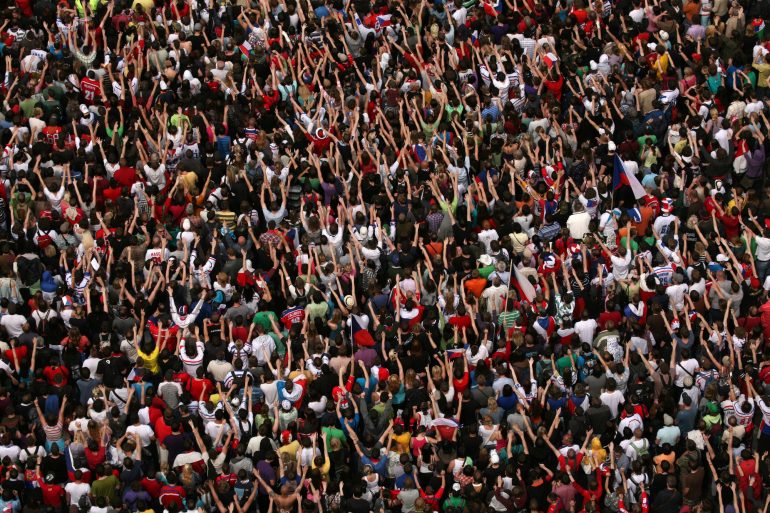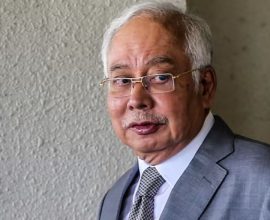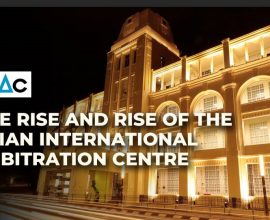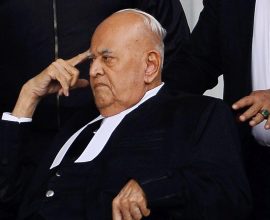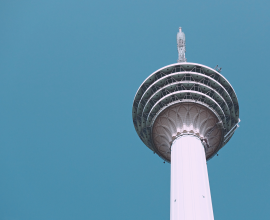Can mass civil disobedience unseat a tyrannical government?
Whether mass civil disobedience can unravel a tyrannical government is a difficult question to answer. History reveals movements that have succeeded gloriously, or have failed miserably. A tyrannical government would be unfazed by any kind of disobedience. That is one aspect Much also depends on the location of the movement: what works in New York, […]
Whether mass civil disobedience can unravel a tyrannical government is a difficult question to answer. History reveals movements that have succeeded gloriously, or have failed miserably.
A tyrannical government would be unfazed by any kind of disobedience. That is one aspect
Much also depends on the location of the movement: what works in New York, London or Holland may not work in the Middle East, or some parts of Asia. That depends on the attitude of the civil rightists and the moral attitude of the government one is trying to change.
The third concerns the organism of mass disobedience itself. It usually exhibits four qualities. First, mass disobedience won’t work unless a minimum number of the citizenry support the movement. Some analysts place it at 2% of the population. Second, that threshold population must be prepared to do three things at the same time: (1) disobey laws, or act against unfair circumstances (2) not break any ethically based laws while carrying out the protest (the question then is whether one can disobey an unfair or unjust law – we will see an example shortly) and (3) be prepared to go to prison and endure governmental bullying for prolonged periods. The moment one follower breaks the law, civil disobedience gets into trouble.
In some countries secret police, dressed as protesters, act as saboteurs: they set buses and homes ablaze. They desire to bring about the spectre of a massive breach of peace. So that they can say, ‘Look at how these people are ruining peace and harmony.’ You have heard this rhetoric again and again. This will give the oppressive government the excuse to brand the movement as ‘terrorists’ or anarchists.
Often this tactic, along with scare tactics, works. Eventually, people will shy away from it. A man many tell his son, ‘Do not go to these rallies. Do not attend demonstrations and get beaten up. Go to school. Work hard. Become a doctor. ‘ It is talk like this that irks some patriots. More doctors and lawyers cannot change a racist regime. Something more was required.
That something is patriotism. An undying love for one’s nation.
A good example is Gandhi. He brought about mass civil disobedience in India. His policy of purna swaraj (‘total self-rule’) attracted millions. Most were villagers. Many were of the educated classes. Some were aristocrats. He took all his British woven clothes and set them ablaze. He lived an ascetic life. Churchill was to him ‘that Indian fakir.’ His movement threatened the cotton mills of Britain. He was thrown into prison a number of times. He urged Indians to refuse salt from government suppliers. He marched to the sea, to Dandhi beach, a seaside village in Gujarat. He was accompanied by thousands of his disciples. It was more than 88 years ago: the date was March 12, 1930. He manufactured salt and shared it with everyone. That, the British Government said, was ‘illegal salt’.
Gandhi then wrote to Lord Irwin, the Viceroy of India. Gandhi said he intended to raid the Dharasana Salt Works. He was arrested. A retired judge Tyabji, aged 76, took his place. At his side stood Kasturibai, Gandhi’s wife. They too were arrested. Peaceful agitation continued under Sarojini Naidu and Abdul Kalam Azad. On May 21, Ganshi’s followers proceeded towards the factory. Sarojini told Gandhi’s followers , ‘You will be beaten, but you must not resist: you must not even raise a hand to ward off blows.’ Wielding steel-tipped batons, the police waited. On a command, lines of protesters resolutely marched towards them. When they fell, another line took its place.
Waves of humanity surged forward until, it is said, the earth was dyed in blood. History records it in the words of Webb Miller, an American journalist. He says:
‘Not one of the marchers even raised an arm to fend off the blows. They went down like ten-pins. From where I stood I heard the sickening whacks of the clubs on unprotected skulls. The waiting crowd of watchers groaned and sucked in their breaths in sympathetic pain at every blow.
Those struck down fell sprawling, unconscious or writhing in pain with fractured skulls or broken shoulders. In two or three minutes the ground was quilted with bodies. Great patches of blood widened on their white clothes. The survivors without breaking ranks silently and doggedly marched on until struck down. When every one of the first column was knocked down stretcher bearers rushed up unmolested by the police and carried off the injured to a thatched hut which had been arranged as a temporary hospital.
There were not enough stretcher-bearers to carry off the wounded; I saw eighteen injured being carried off simultaneously, while forty-two still lay bleeding on the ground awaiting stretcher-bearers. The blankets used as stretchers were sodden with blood.
At times the spectacle of unresisting men being methodically bashed into a bloody pulp sickened me so much I had to turn away… I felt an indefinable sense of helpless rage and loathing, almost as much against the men who were submitting unresistingly to being beaten as against the police wielding the clubs…
Bodies toppled over in threes and fours, bleeding from great gashes on their scalps. Group after group walked forward, sat down, and submitted to being beaten into insensibility without raising an arm to fend off the blows. Finally the police became enraged by the non-resistance….They commenced savagely kicking the seated men in the abdomen and testicles. The injured men writhed and squealed in agony, which seemed to inflame the fury of the police….The police then began dragging the sitting men by the arms or feet, sometimes for a hundred yards, and throwing them into ditches.’
Miller went to the hospital where the wounded lay. He ‘counted 320 injured, many still insensible with fractured skulls, others writhing in agony from kicks in the testicles and stomach. … Scores of the injured had received no treatment for hours; two had died.’
Thus did Gandhi cloth his movement with a word that the Indian subcontinent knew for long decades : ahimsa- ‘non violence’.
After that civil disobedience activities were renewed. Police regiments simply sank under the weight of fatigue. Gandhi was prepared for these consequences. He hardened his heart. As did his disciplines, the satyagrahis (translated, ‘satya’ meant ‘truth’, and ‘agraha’, ‘polite and passive insistence’). He endured, but at great cost to himself and his followers. Mandela did not use the same model in South Africa. He turned to civil rights and political protest. He had the same results. His price was lifelong incarceration.
Who can forget these two giants? Or others like them?
One person can bring about change. But it requires ahimsa. He who takes up ahimsa, may prevail, but only after enduring terrrible hardship.
Who would consider marching forward with one’s children, to meet a line of police bayonets? Remember the young man in Tiannaman square, who blocked a tank squadron with a flag? That was on June 5, 1989. Where is he now? Where are the unnamed others who did what he did (He was the only one photographed).
Great victories were won only by great sacrifices.
History is replete with such examples.
These great men and women sacrificed all that they had for the betterment of their fellows.

